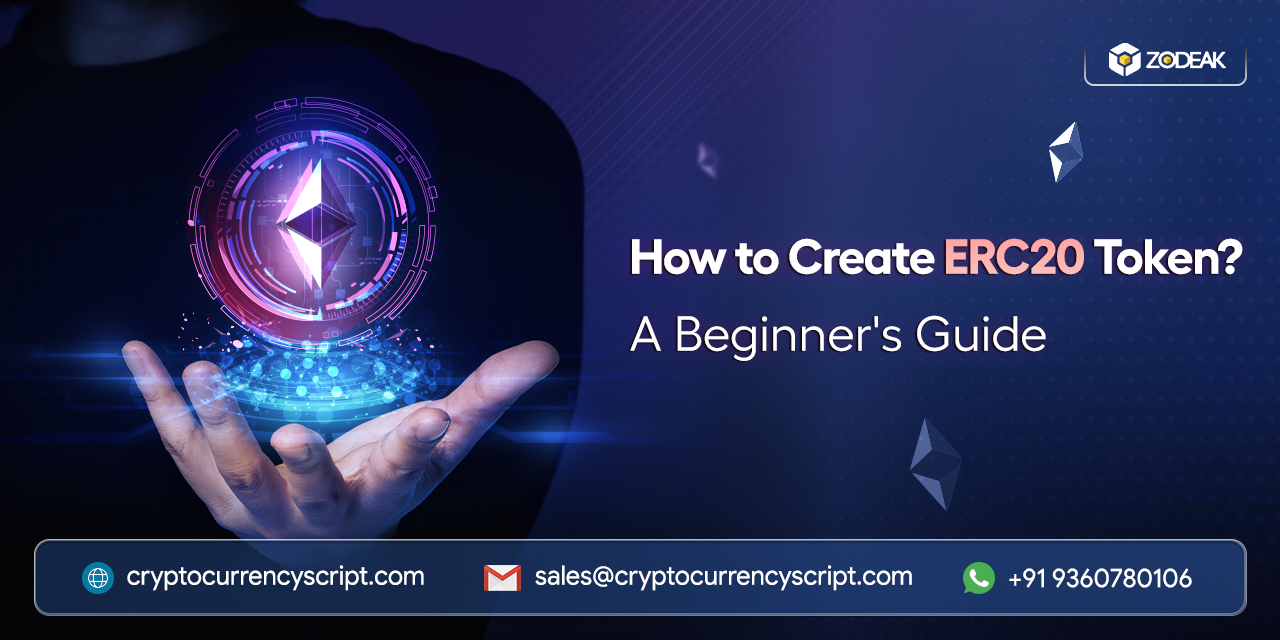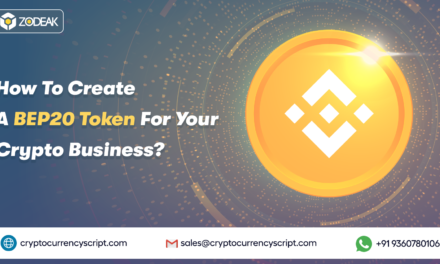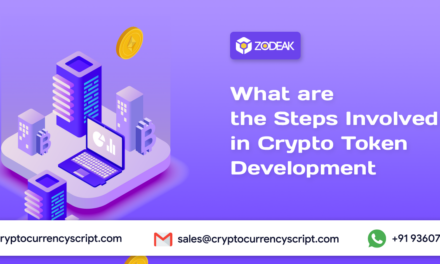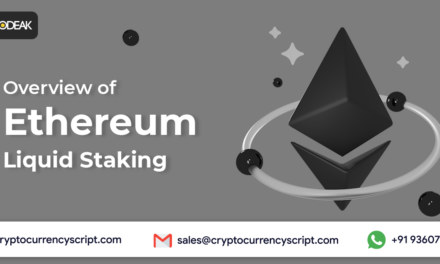As we all know Ethereum blockchain has fueled the rise of many successful projects including decentralized applications, but it is most commonly used for token development. Many startups in the crypto space lack clarity on how to create ERC20 token, which are highly sought after for business fundraising.
Today, we will see the basics and move on to see the steps to turn your idea into a fully functional ERC20 token.
What is an ERC20 token?
An ERC20 token is indeed a type of crypto token that is created and deployed on the Ethereum blockchain. The term “ERC20” stands for Ethereum Request for Comment 20, which is a technical standard used for token implementation on the Ethereum platform.
ERC20 tokens adhere to a specific set of rules and functions defined in the ERC20 standard. These rules include methods for creating, transferring, balancing, and other basic operations of tokens. By following these standards, ERC20 tokens are compatible with various Ethereum wallets, exchanges, and decentralized applications (dApps).
Generally, fungibility is a key characteristic of ERC20 tokens. Fungible assets are the same value of tokens interchangeable with any other token of the same type. This interchangeability allows for seamless integration and widespread use within the Ethereum ecosystem.
Several well-known cryptocurrencies, including EOS, Binance Coin, and Chainlink, were initially created as ERC20 tokens.
Now let’s see how to create ERC20 token in 5 steps for your business next.
Relate Article: BEP20 Vs ERC20
Create Your ERC20 Token in 5 Steps!
Creating ERC20 tokens requires a good understanding of Solidity, the programming language used for Ethereum smart contracts, and general blockchain concepts. Or Better to get in thought with an ERC20 token development company or developer to generate such tokens for your business.
Below are the key steps to generate ERC20 tokens built on the Ethereum blockchain, you need to follow:
Step 1: Set up the Framework
Set up the tools and frameworks required for designing and deploying tokens and smart contracts on Ethereum. This usually entails installing a development environment such as Remix, Truffle, or Hardhat.
For testing and deploying your contracts on the blockchain, you’ll also need a local Ethereum client, such as Ganache.
Step 2: Smart Contract Development
Smart contract development needs solidity language and it should adhere to the ERC20 standard. The contract should include functions for transferring tokens, checking balances, and other required functionalities.
The following features are include in the smart contract that defines the basic functioning of an ERC20 token:
- The name and symbol of the token
- The total supply of the token
- The balance of each account that holds the token
- The allowance of each account to spend the token on behalf of another account
- The transfer of ERC20 tokens from one account to another
- The approval of another account to spend tokens on your behalf
- The transfer of tokens from one account to another on behalf of another account
You can customize this smart contract to fit the needs of your ERC20 token. And can use the Solidity compiler to compile the developed smart contract into bytecode in the blockchain.
Step 3: Testing Smart Contract
Create test cases to ensure that your smart contract is correct and reliable. To run these tests against your contract, use a testing framework such as Truffle or Hardhat. To confirm that your contract works as intended, test various scenarios such as transfers, allowances, and edge cases.
Step 4: Deploy the Smart Contract
You can either deploy directly on the Ethereum blockchain or on a test network for testing, such as Ropsten, Kovan, or Rinkeby. Make sure you have enough ETH to pay gas fees in order to deploy the smart contract.
Step 5: Interact with the ERC20 Token
Once launched, you can use the smart contract’s functionality to communicate with your ERC20 token. To interact with the token, you can create your own front-end application or utilize Ethereum wallets like MetaMask and MyEtherWallet.
These are the key steps to create your ERC20 tokens for your business. It also includes token security and auditing, distribution and management, and more aspects.
Before generating tokens, it is better to consult with industry experts to get clarity. Because many startups often confuse ERC20 vs ERC721.
Final Words!
Hope you understand the concept of how to create an ERC20 token. You have learned the information and abilities required to develop Ethereum tokens that contribute to your business by following these steps. Therefore, creating an ERC20 token allows you to take advantage of the Ethereum network and opens up new possibilities for your business to gain greater heights.





